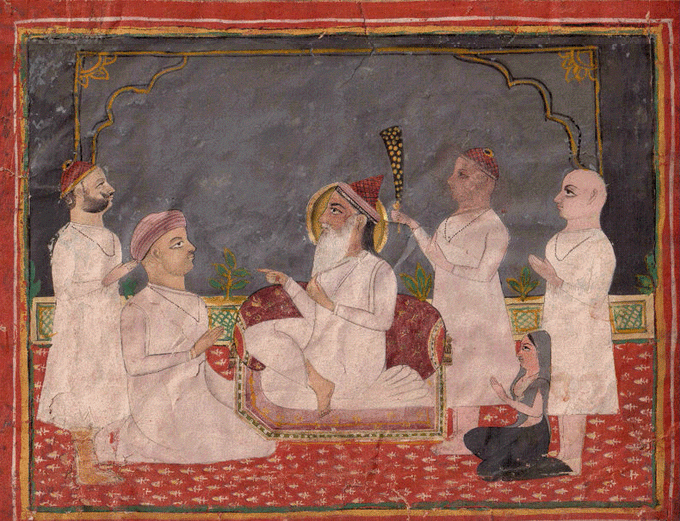
|
|
|
|
BY: SUN STAFF

Krishna Fluting in a Tree Dec 29, 2011 — CANADA (SUN) — A serial presentation of India's artistic legacy in paintings, sculpture and temple architecture. THE DECCANI SCHOOLS HYDERABAD Before turning to the Central Indian and Rajasthani schools of the 17th-19th Centuries, today we'll explore the last of the Deccani schools – Hyderabad. Located in south central India (as opposed to Hyderabad, Rajasthan), Deccan Hyderabad's art was naturally influenced by not only the Mughal, but also the South Indian style. Among the earliest extant Miniatures from the Hyderabad School are those painted around 1724 A.D., under patronage of the Asafjhi dynasty. The Mughal style, well established in its influence over other Deccani schools, was also prevalent at Hyderabad, into the 19th Century. The Persian style can be seen in costume, ornament, landscape and colors.

Asavari Ragini, Ragamala Hyderabad Miniatures typically featured rich colours, and the distinct Deccani facial types and costumes, found also in Vaisnava themed paintings like the Asavari Ragamala scene, above. Due to the fact that Emperor Aurangzeb had no taste for the fine arts, many artists suffering from a lack of patronage ended up migrating to Hyderabad in the Deccan, as well as to the Hindu states of Rajasthan. Although Hyderabad state was just created in the Deccan around 1725 A.D., after the Mughal Empire had begun to disintegrate, some Deccani paintings that pre-date 1725 are also attributed to the Hyderabad School. This is no doubt the case because the paintings bear the unique attributes of this school of Miniatures, even though they were painted in advance of an official declaration of statehood. One example of an early Hyderabad painting is the image below, of Shirin bathing. This Persian scene comes from a famous secular text written in Iran in the late 12th Century. The Miniature illustration was created in Hyderabad perhaps as early as five years before the state was founded. The painting depicts men in Persian garb and women in Indian attire.

Khusraw Beholding Shirin Bathing The brilliant colors and vignette scenes placed among the rounded hills create an entirely whimsical mood, and the Deccan School of art has a reputation for such eccentric works. These south central Indian artists can't take all the credit, however, for this style of painting. Much earlier Vaisnava works like the Harivamsa also featured hills composed of rolling waves of earth, often rendered in brilliant pastel hues. Although this style does appear to have originated in Persia, it shows up in North Indian Vaisnava paintings that significantly pre-date the Hyderabad School example shown here.

Ladies on a Terrace The Harivamsa, a Puranic text composed in Sanskrit, is considered to be a khila, or supplement to the Mahabharata. Many wonderful illustrations of Lord Krsna and Balarama's pastimes are found on dispersed leaves from Harivamsa. Further comments on the intersection of Mughal and Vaisnava art styles, such as the dream-like hills of this Hyderabad Miniature, can be found in a previous Sun Feature: The Mughal Influence on Vaisnavism.

Guru-darshan Finally, the painting above is an example of a Hyderabad School painting in the Vaisnava style, but with a mixture of other influences. The Persian influence is minimal. Although the red and white patterned floor is suggestive of Mughal style, it is not actually an Islamic motif. The tableau is 'daksina style', depicting a disciple taking darshan of his guru. While the daksina arrangement is a Vaisnava style, the figures in this painting are not consistently styled. On the far left is a male figure who wears a beard in the South Indian style, although similar beards are found in the Nathadwar, Rajasthan Krishna-cult paintings. On the far right we see a Vaisnava devotee in typical North Indian style (Bengal or Mathura). Given the turban and rounded face of the kneeling disciple, he is reminiscent of Gujarati style paintings. Altogether, the scene is a mixture of figural styles that were no doubt perfectly clear to the Hyderabadi artist, but are open to interpretation for those viewing this wonderful painting today.
| |